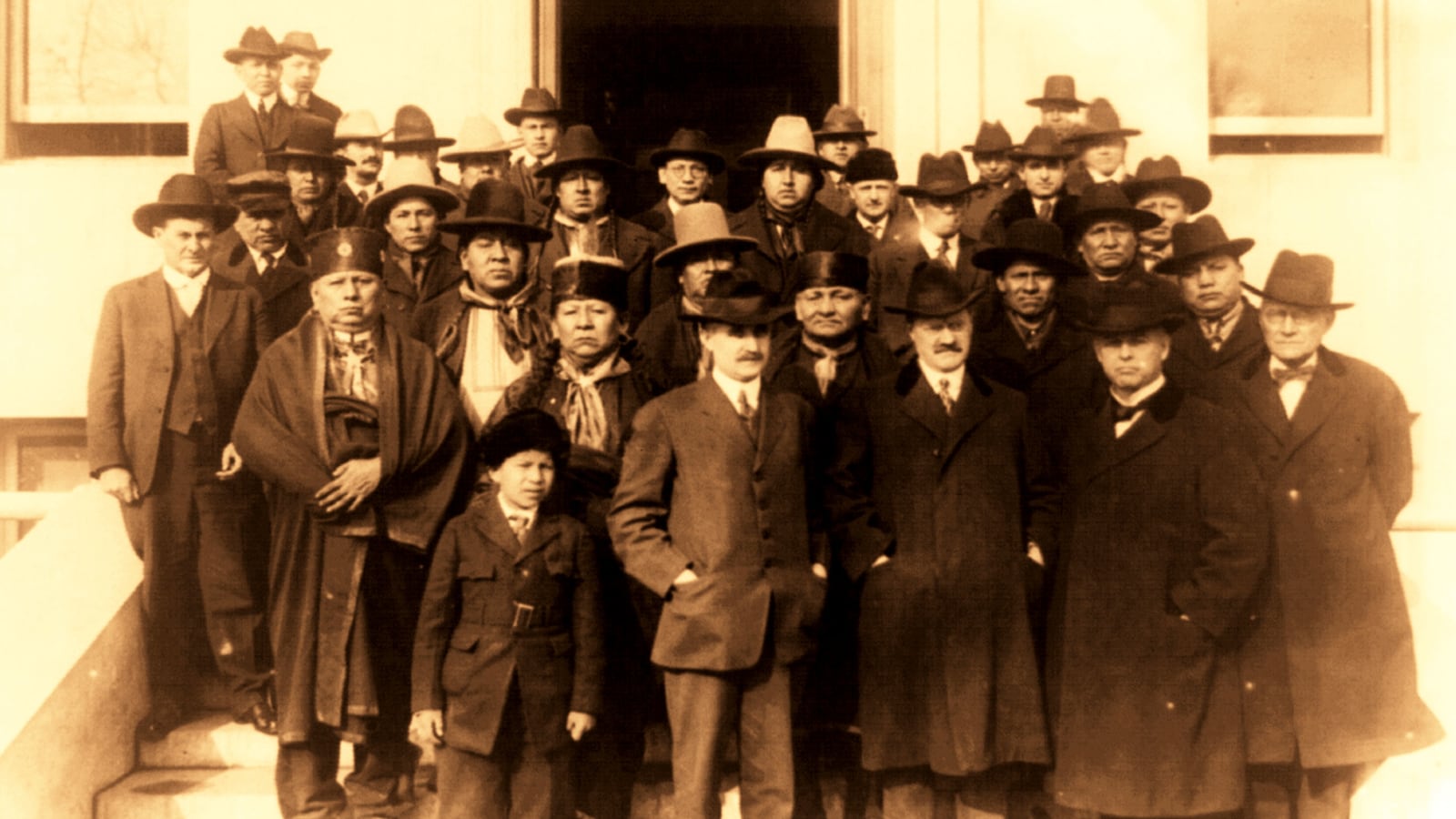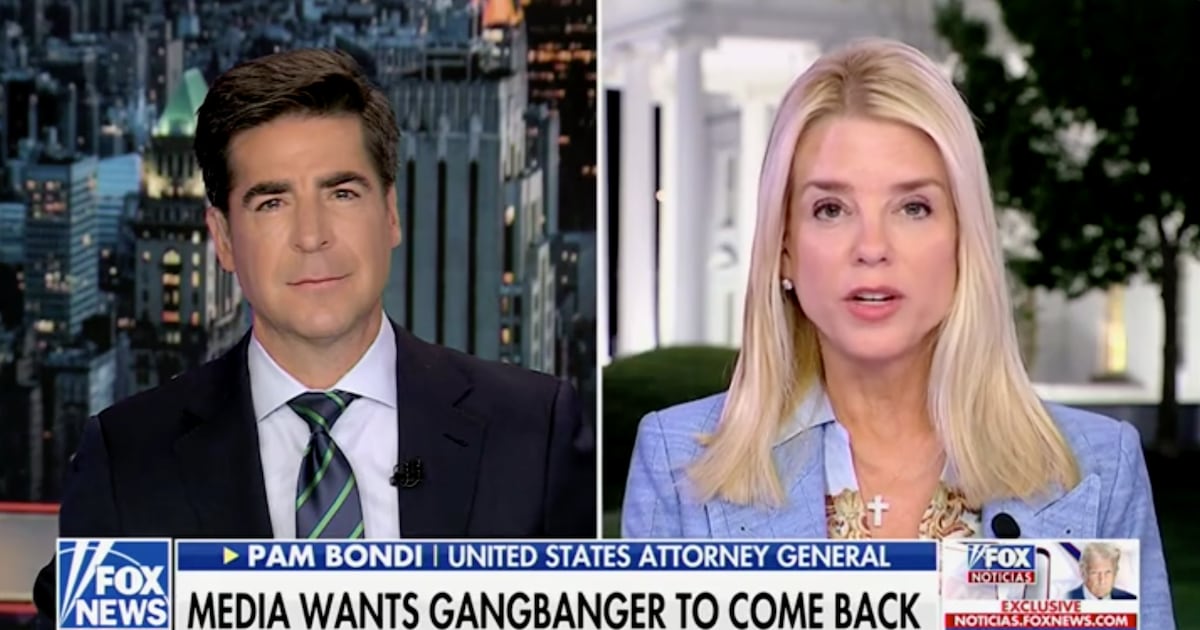David Grann was already interested in writing a book about the serial murders of members of the Oklahoma-based Osage Indian tribe when he visited the Osage Nation Museum.
On one wall was a panoramic photo of members of the tribe taken in 1924, but there was a panel missing. When Grann asked the museum director what happened to that part of the photo, she responded “It’s too painful to show. The devil was standing there.”
That “devil” was a white man named William Hale, ostensibly a friend of the tribe but, as it turned out, a vicious murderer who killed Indians for their money, which was considerable, since the Osage lived on oil-rich land, and at one point were considered the wealthiest people per capita on earth.
Hale wasn’t the only white man who killed Osage for profit, a story told in Grann’s new book, Killers of the Flower Moon. Author of the 2009 bestseller The Lost City of Z, about the search for a vanished civilization in the Amazon (the film version debuted April 14),
Grann tells an entirely different story in his latest work, one that has elements of the Wild West, classic gangster movies, the birth of the FBI, greed, and racism. “Why were the Osage killed?” asks Grann. “They were killed for their money. However, it was racism that made these killings nonchalant, and allowed them to go on for years. What is amazing is how some of the killers did not equate killing a Native American with murder. The prejudices of the time are an essential element to this story.”
Also essential to understanding the reason behind the killings—which extended from 1918 to 1931 and may have involved hundreds of deaths (no one really knows)—are the mind-boggling corruption and incompetence of Oklahoma law enforcement agencies and a thoroughly racist federal system of financial guardianship, which mandated that any Indian be given a (white) guardian if the Department of the Interior deemed that person “incompetent” to handle their own affairs. This gave the unscrupulous the incentive to bump off Indians and take over their oil leases.
“One of the things that intrigued me was just how lawless this part of the country was,” says Grann. “You kind of think that period of American history is over, this last remnant of the Wild West. And I was also intrigued by how corrupt law enforcement was.”
Grann says he first heard about this forgotten episode when a historian mentioned the killings. After his visit to the Osage Nation Museum, Grann realized he “wanted to figure out the pain the Osage felt, and understand and document this story that most people had forgotten.” He spent a year filling out Freedom of Information Act requests for documents relating to the case, then returned to Oklahoma, where he found “that many Osage were very welcoming. So many of them have stories that have not been told, so many of them are chasing ghosts. Justice was never brought to their cases.”
What Grann discovered, in fact, was that despite FBI intervention, which eventually put Hale and another killer behind bars, many of the murders remain unsolved. Yet that did not stop the young J. Edgar Hoover from touting the convictions as a public relations coup for the Bureau. “Hoover actually wanted to get out of the case, because he couldn’t solve it,” says Grann, “but there was a brewing scandal [a criminal the Bureau released from jail to work as an informant committed a robbery-murder instead], and Hoover was partially motivated by that, to avoid scandal. Then he exploited the case for his own purposes.”
Grann is a New Yorker staff writer who hit it big with The Lost City of Z, which became a number one New York Times paperback bestseller and was translated into 20 languages. He’s a self-described “insecure person” who says that before his books come out, “you live in such dread, that they might disappear. I spend a lot of time on these projects—I’m not a fast writer—and the success [of The Lost City of Z] has allowed me time to work within that framework.”
Describing himself as “a generalist,” Grann says he likes to report on subjects “I know very little about. You want the story to be about something, have some deeper meaning, but there is also an emotional, almost instinctual, element, which is, does this story seize some part of you and compel you to get to the bottom of it?”
With both his new book and the film version of The Lost City of Z (starring Charlie Hunnam, Robert Pattinson, and Siena Miller) being released within days of each other, Grann says he is a bit “freaked” by all the attention. The Lost City of Z was actually optioned in 2008, so Grann has had a long wait for director James Gray’s film version, although he and his wife did go to Colombia to watch some of the filming. “I had never been to a movie set before,” says Grann. “It was a little surreal.”
Grann’s two books have this in common: on one level, they deal with the relationship between whites and people of color. In the case of The Lost City of Z, it’s the indigenous people of the Amazon, described by members of the British scientific establishment as “savages.”
In Killers of the Flower Moon, that connection between whites and the Osage is best described by a member of the tribe who, during Hale’s trial is quoted as saying, “It is a question in my mind whether this jury is considering a murder case or not. The question for them to decide is whether a white man killing an Osage is murder—or merely cruelty to animals.”






